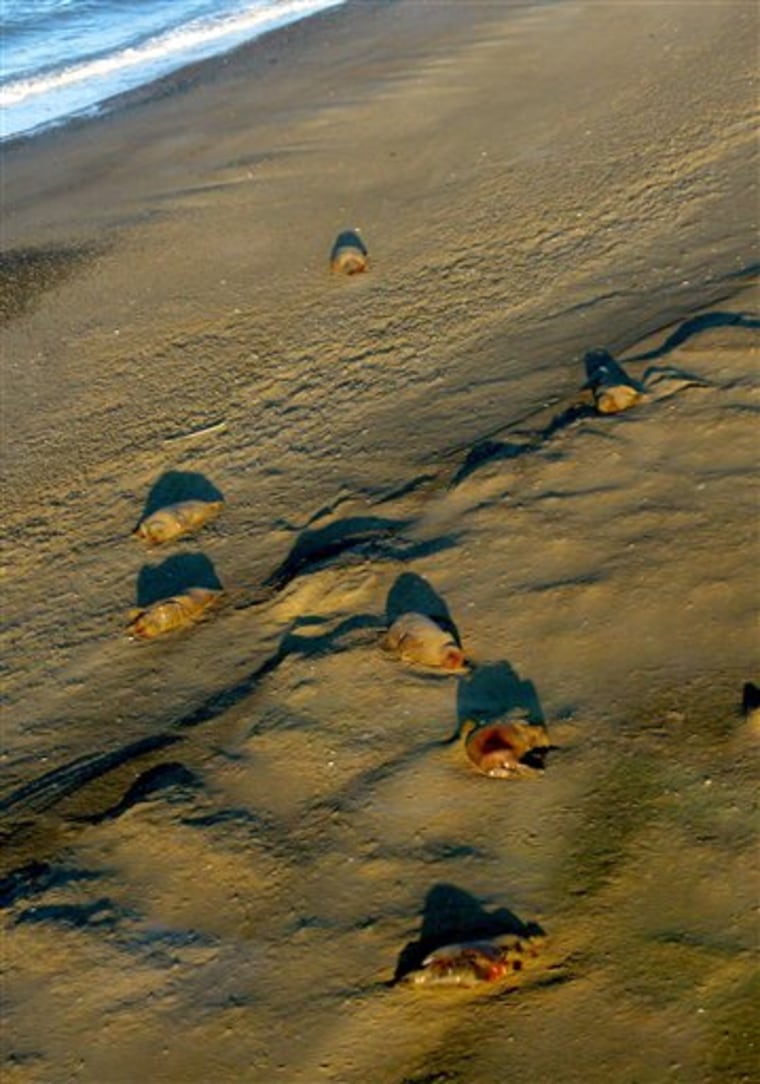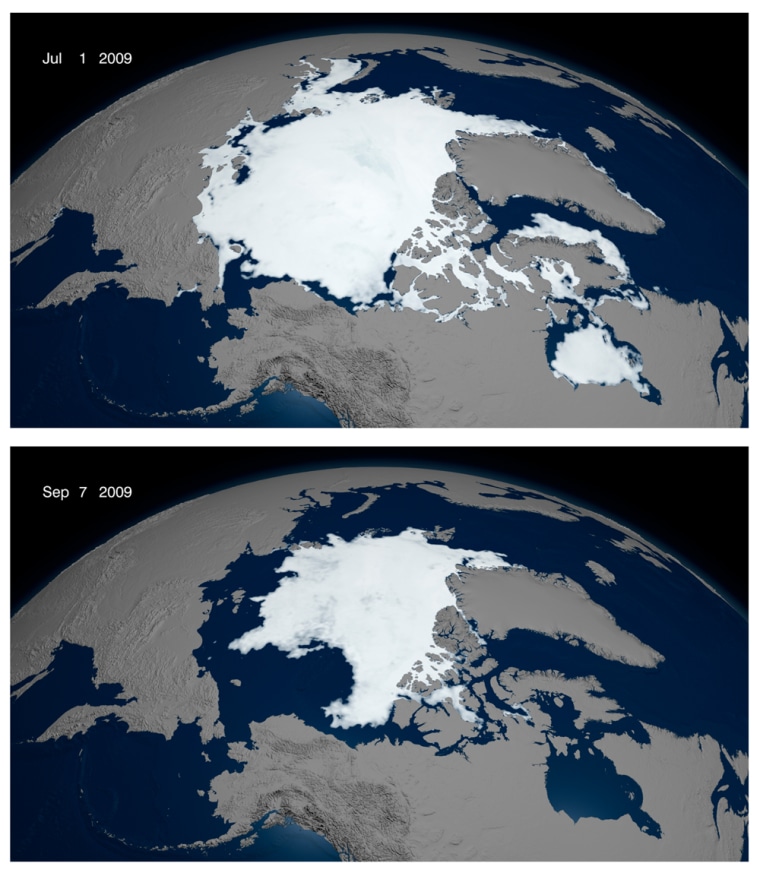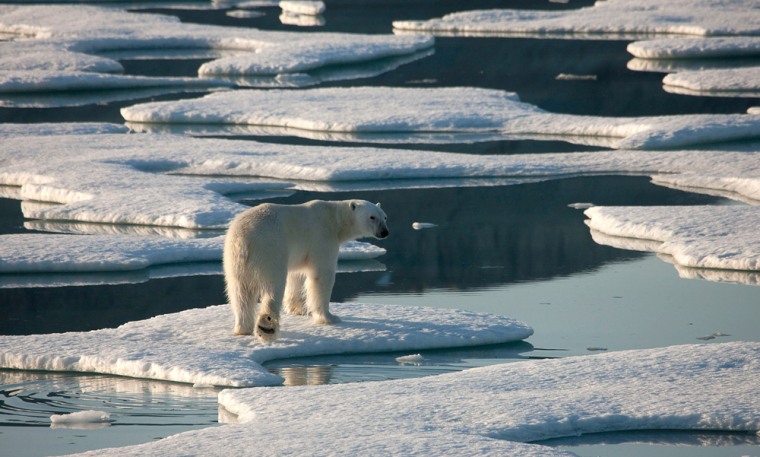Summer sea ice in the Arctic sunk to its third lowest level since satellite records began in 1979, researchers reported Thursday, the same day that other scientists said dozens of dead walruses had been spotted on the shore of Chukchi Sea on Alaska's northwest coast.
Federal wildlife researchers from the U.S. Geological Survey on their way to a walrus tagging project spotted 100 to 200 carcasses near Icy Cape about 140 miles southwest of Barrow.
The dead walruses appeared to be mostly new calves or yearlings. However, neither the age of the dead animals nor the cause of death is known, said Bruce Woods, spokesman for the U.S. Fish and Wildlife Service.
"It's just too early to say until we can get someone on the ground," Woods said.
About 3,500 walruses were reported last week at the Icy Cape haulout site, where walruses rest from feeding forays.
Young animals can be crushed in stampedes when a herd is startled by a polar bear, human hunters or even a low-flying airplane.

This is the second time in three years that walruses have congregated in large numbers on the Alaska shore.
Walrus cannot swim indefinitely and historically have used sea ice as a platform for diving in the Bering and Chukchi seas for clams and other food on the ocean floor.
In recent years, however, sea ice has receded far beyond the outer continental shelf, forcing walruses to choose between riding the ice over waters too deep to reach clams or onto shore.
Environmental groups calling for measures to slow greenhouse gas emissions say walruses gathering in herds on shore — as well as polar bears that have drowned while swimming between ice floes — are evidence that global warming is alerting the Arctic environment and forcing major changes in wildlife behavior.
The National Snow and Ice Data Center at the University of Colorado announced Thursday that Arctic sea ice for 2009 shrunk to its third lowest level since satellite measurements began in 1979. The record low was set in 2007 and ice last year melted to the second lowest level on record.

While Arctic sea ice is now reforming and will build up through winter, Sept. 12 marked the lowest amount of the 2009 summer at just shy of 2 million square miles — 620,000 square miles less than the 30-year average.
Walruses for years came ashore intermittently in Alaska during their fall southward migration but not so early and not in such numbers.
Herds were in the tens of thousands at some locations on the Russian side of the Chukchi Sea. Russian biologists in 2007 reported 3,000 to 4,000 walruses died out of a population of perhaps 200,000, mostly young animals crushed in stampedes.
